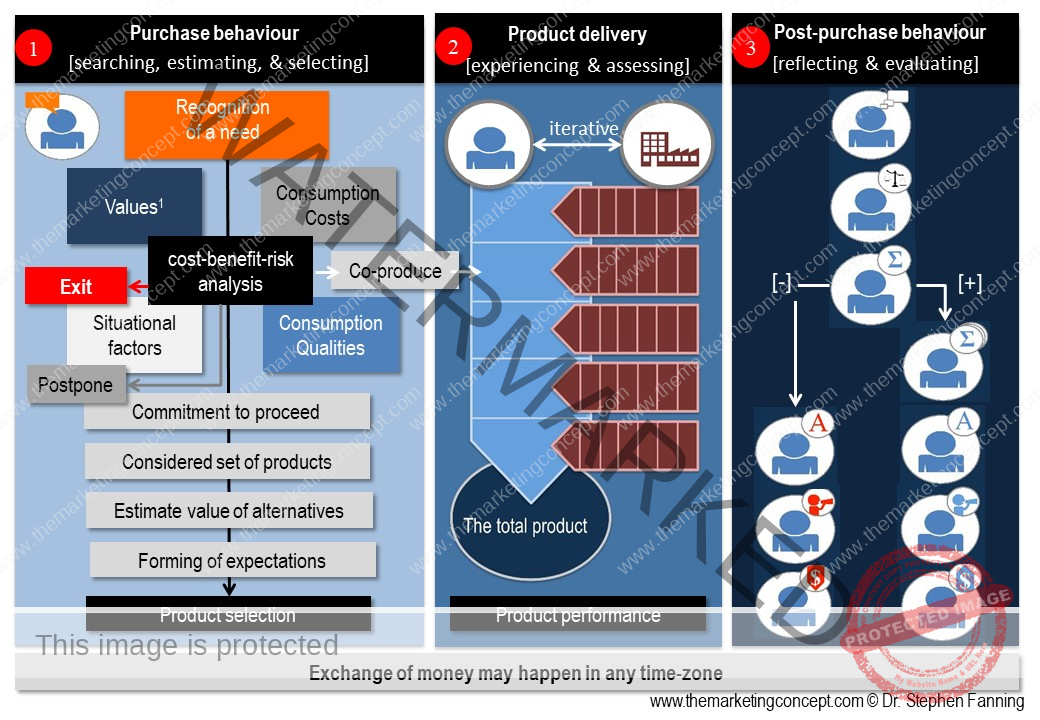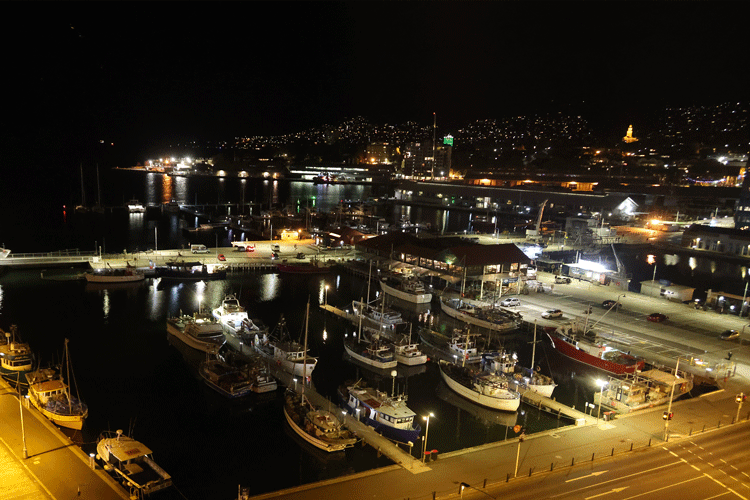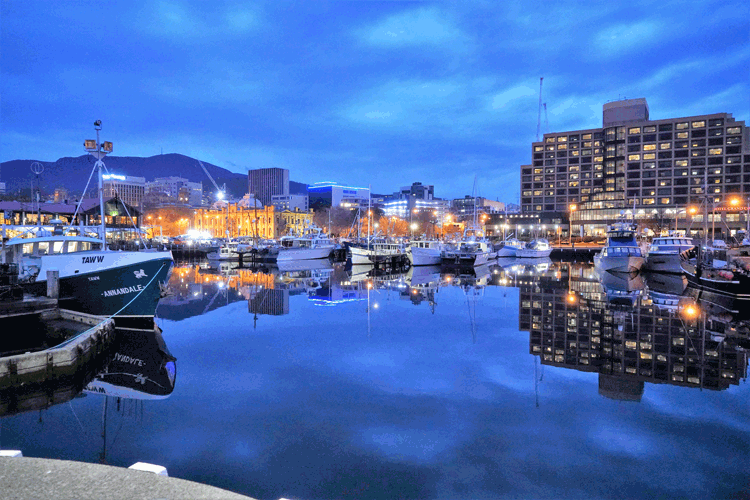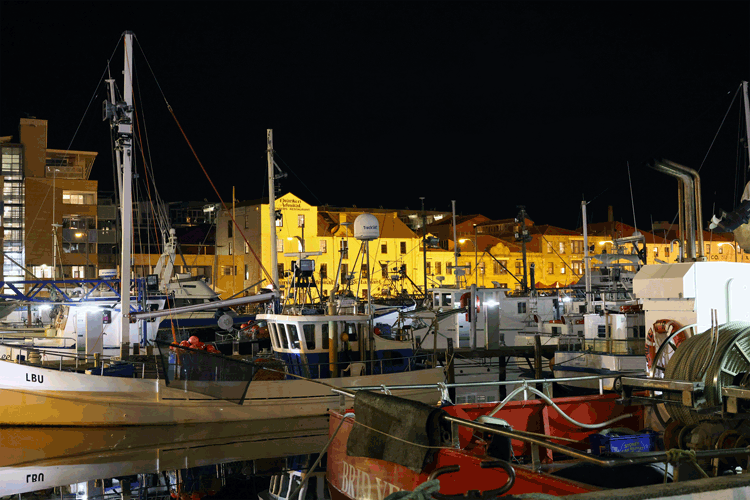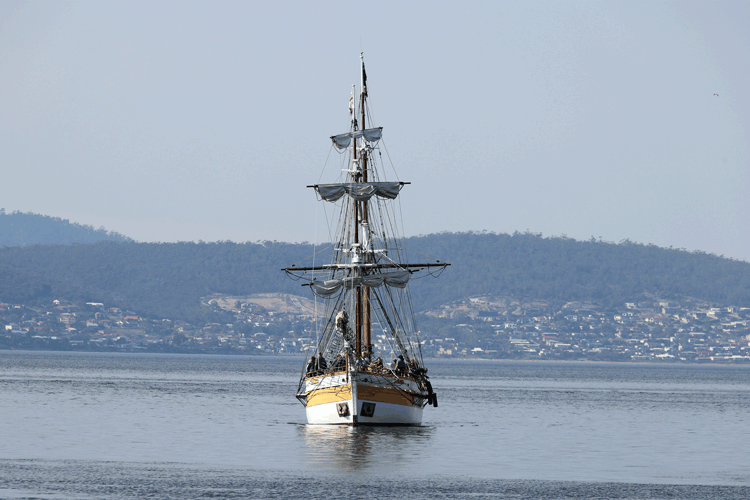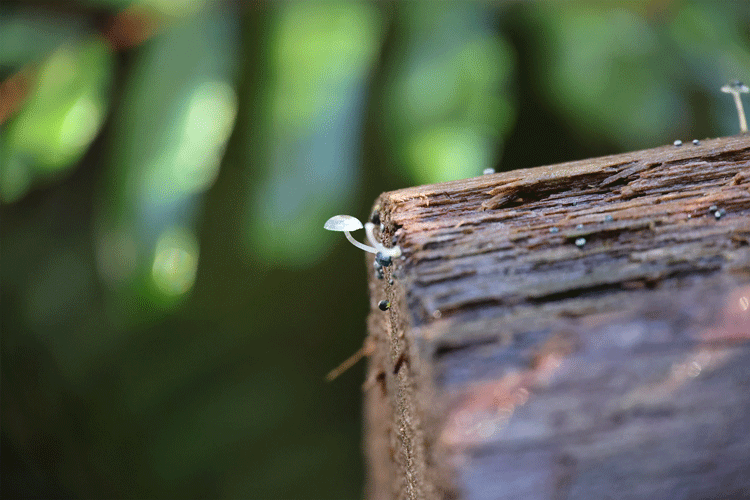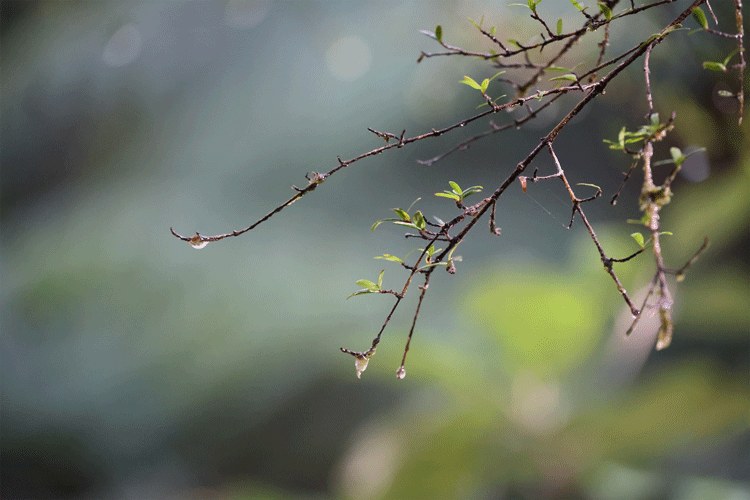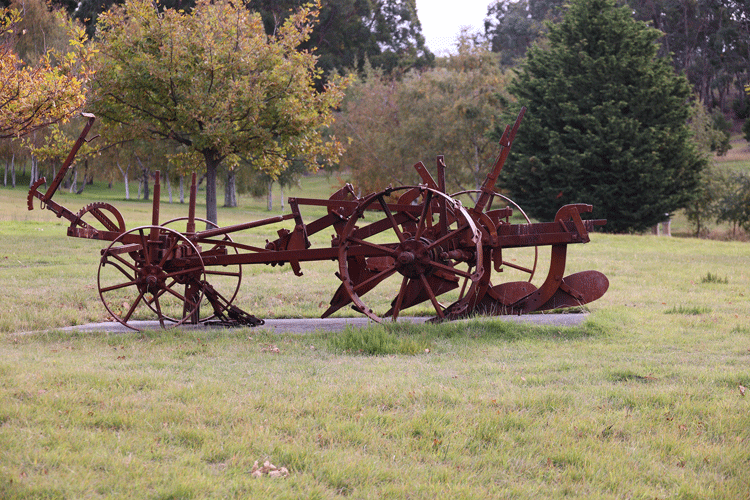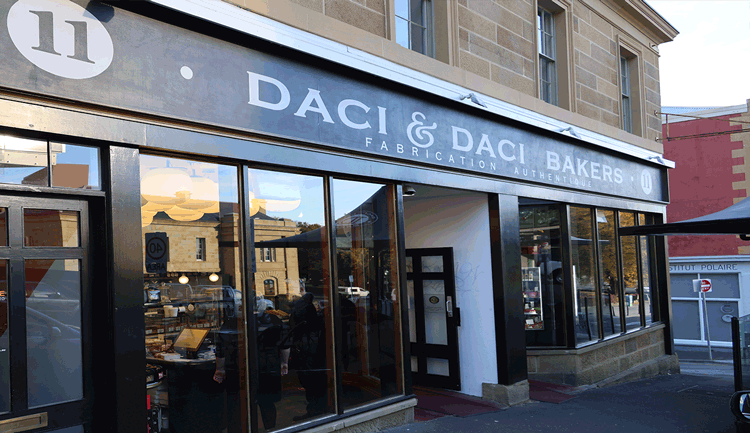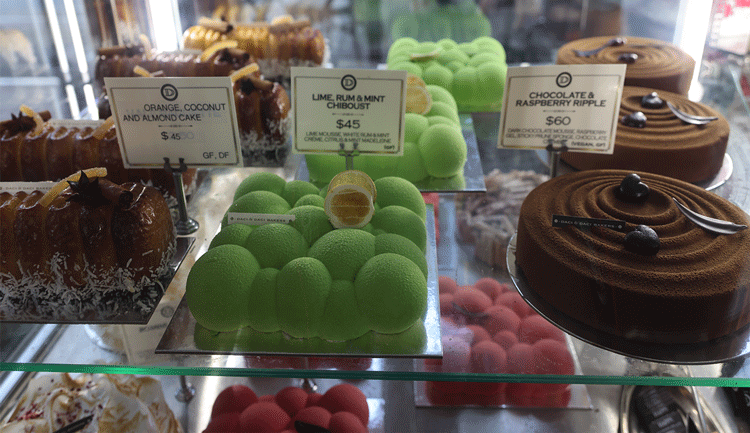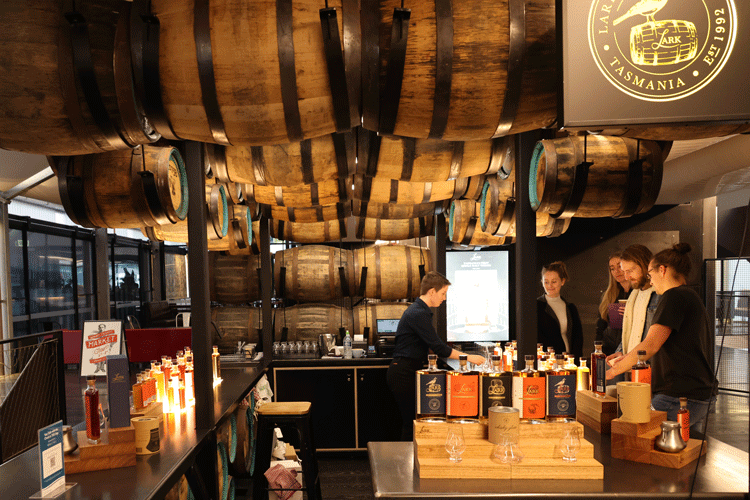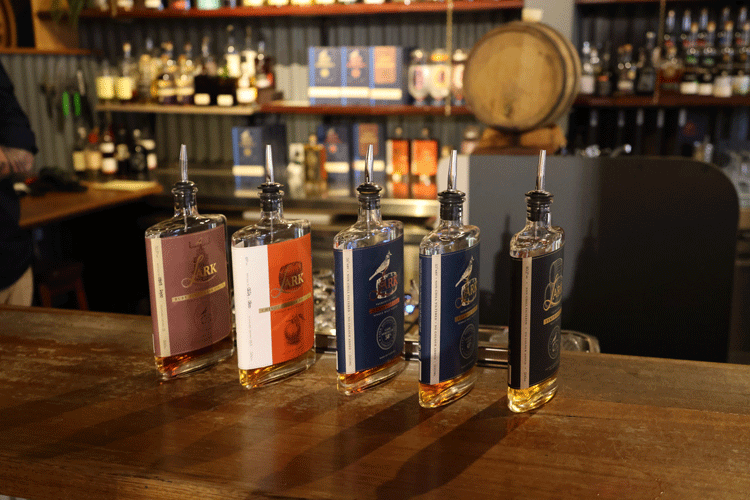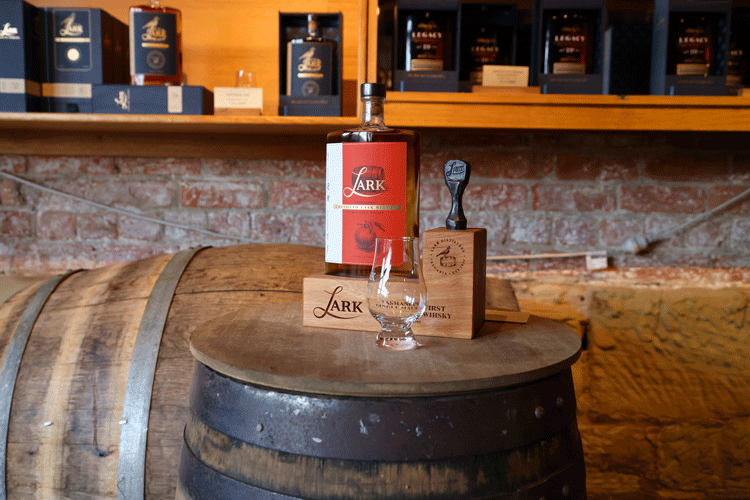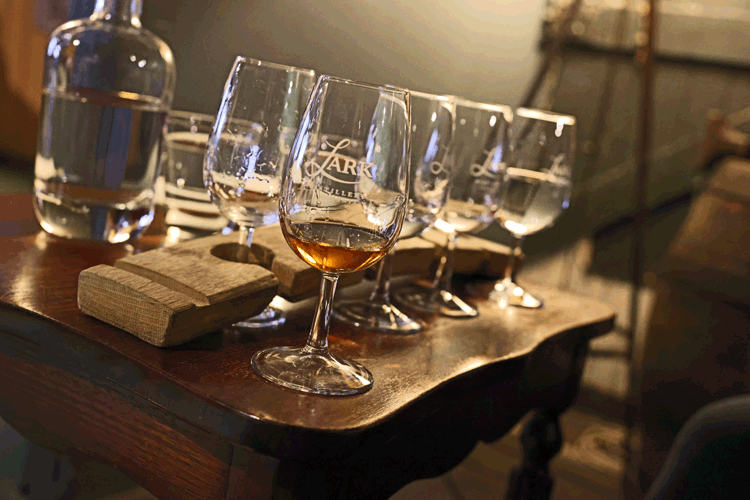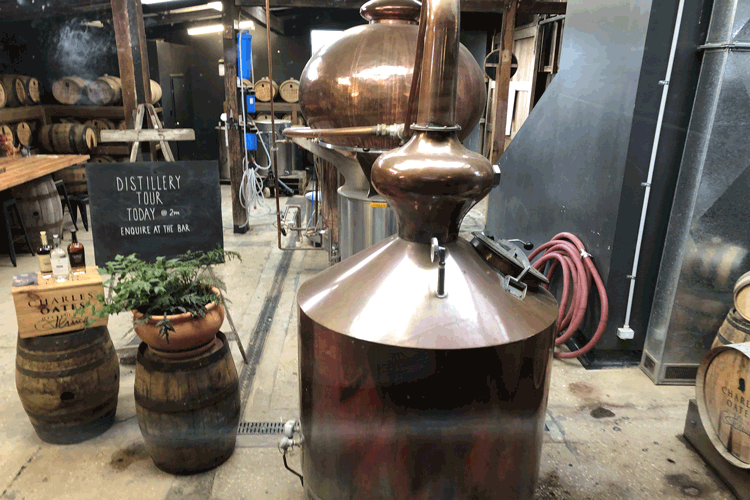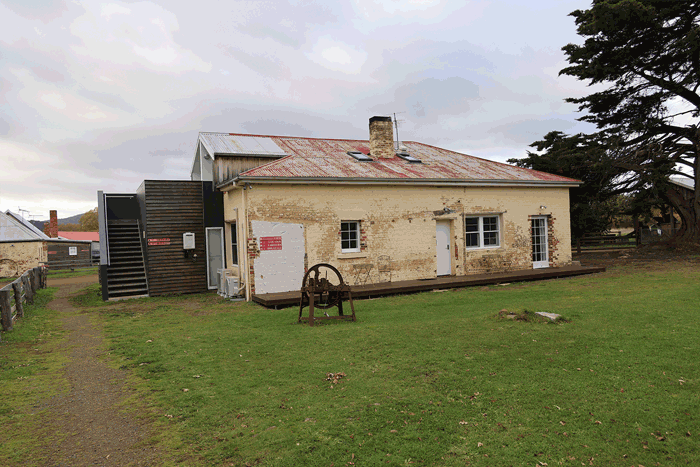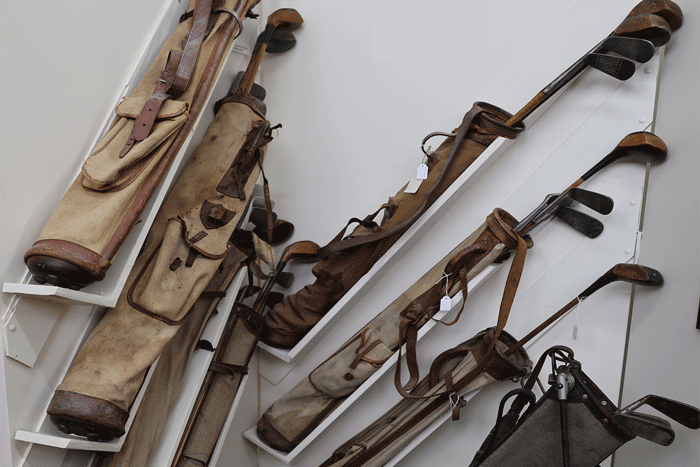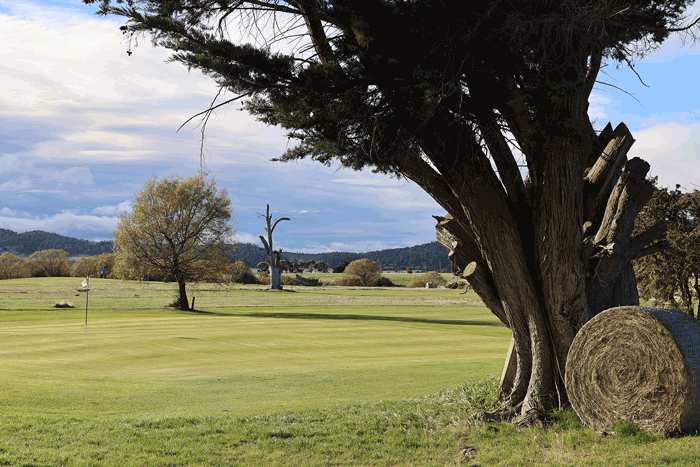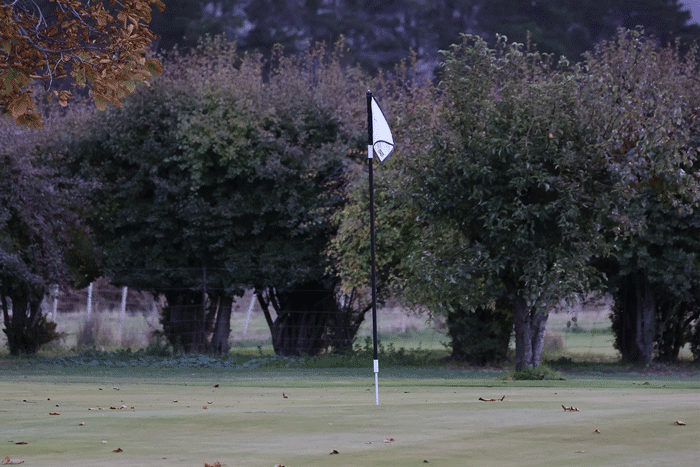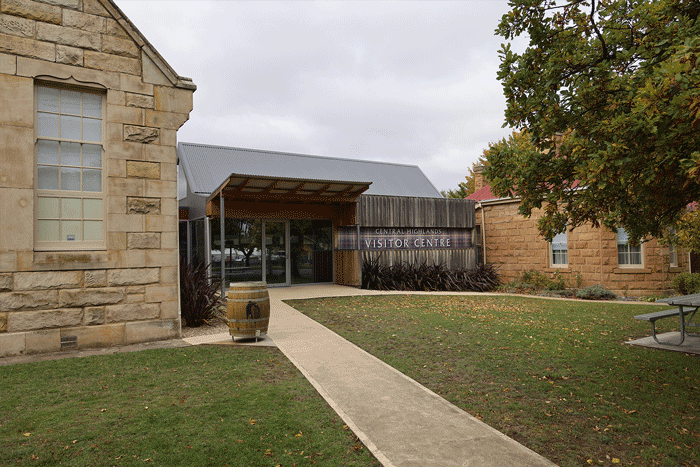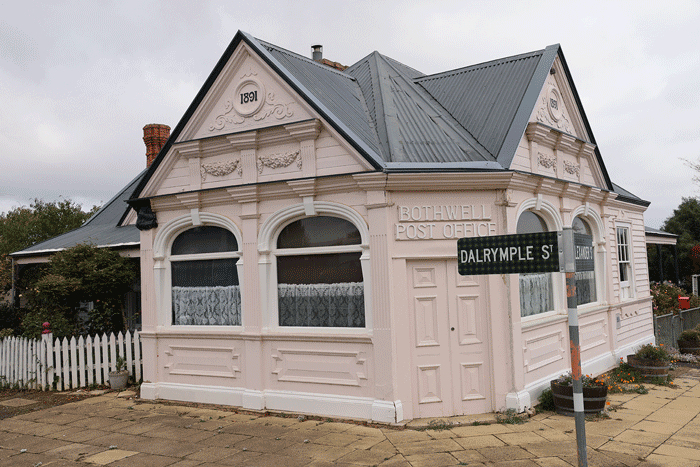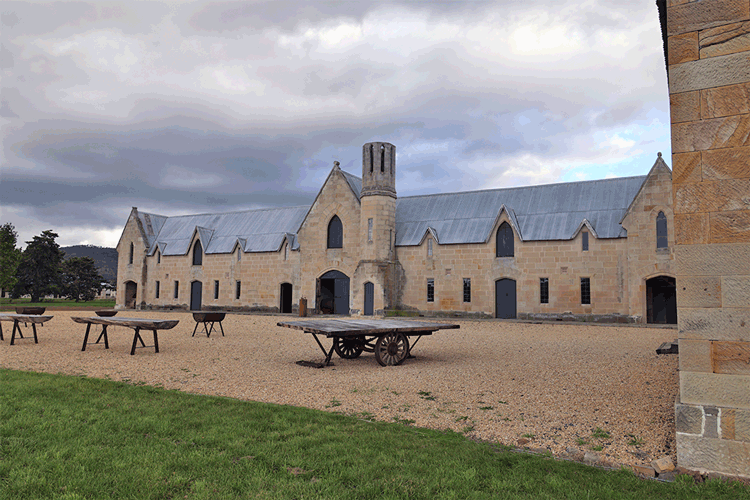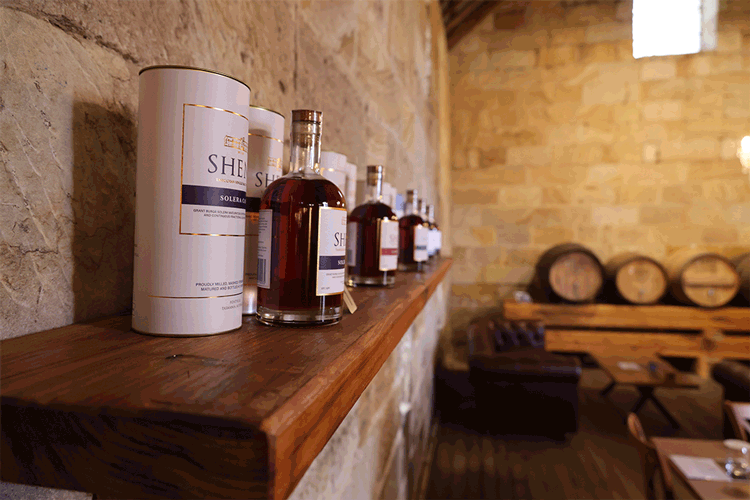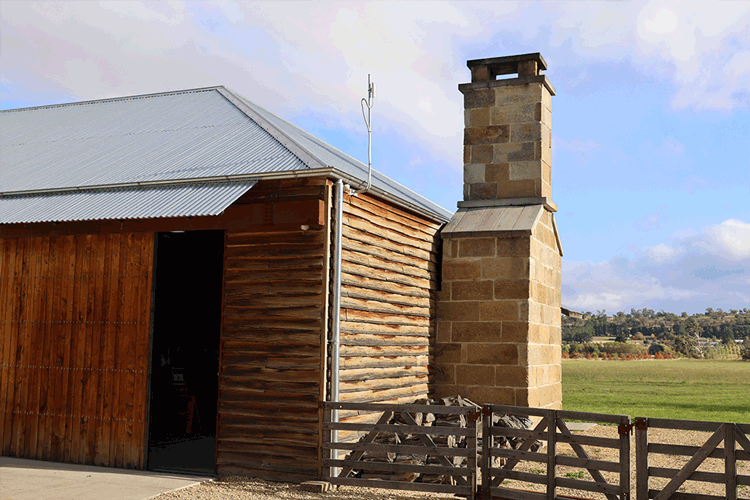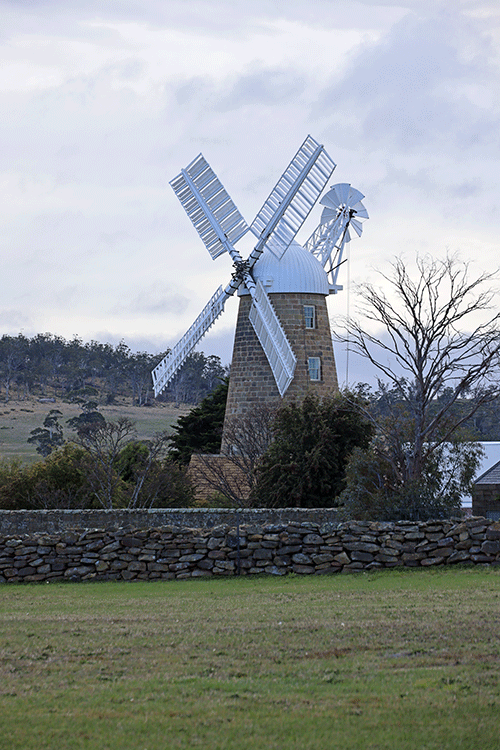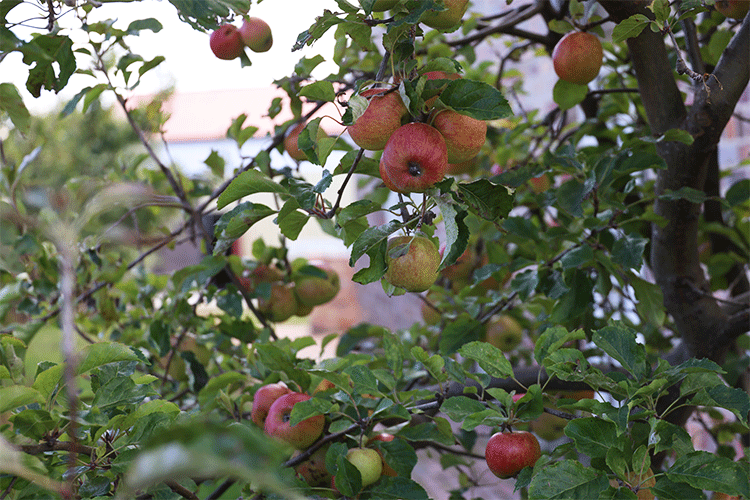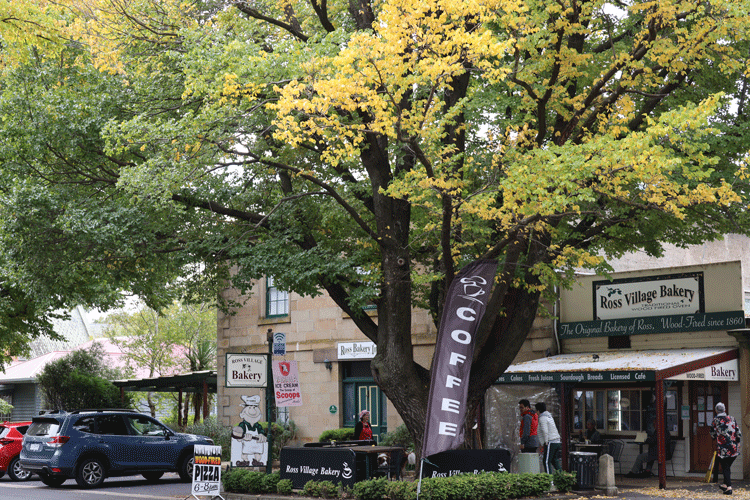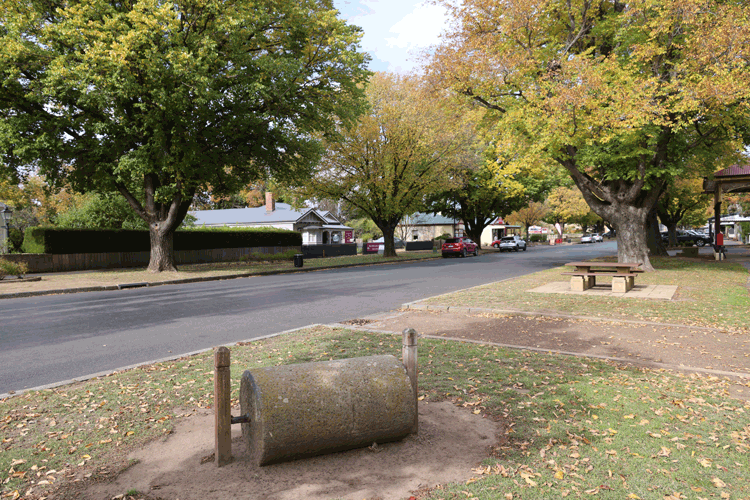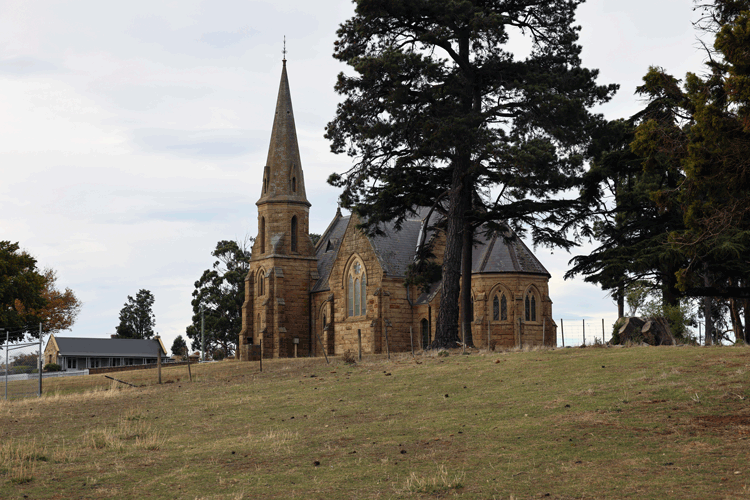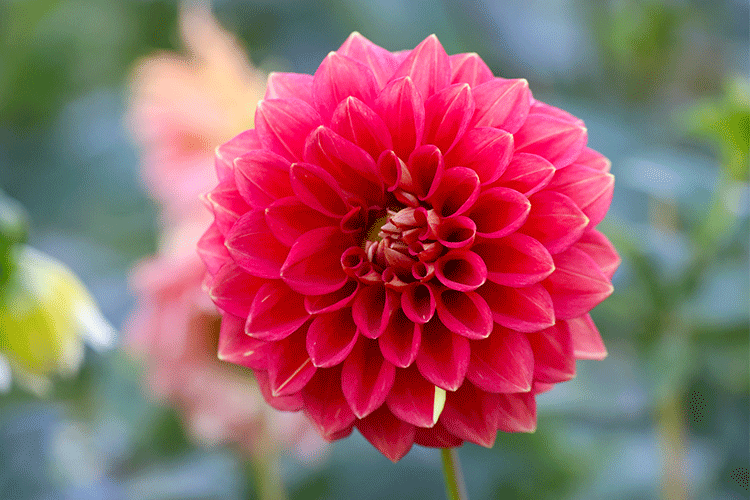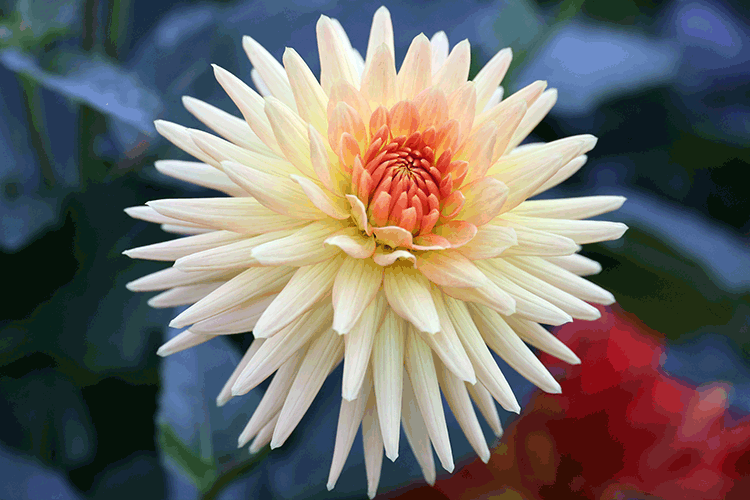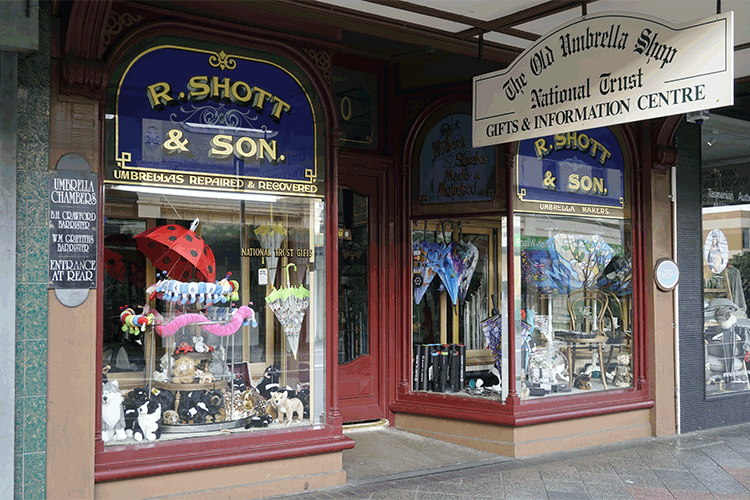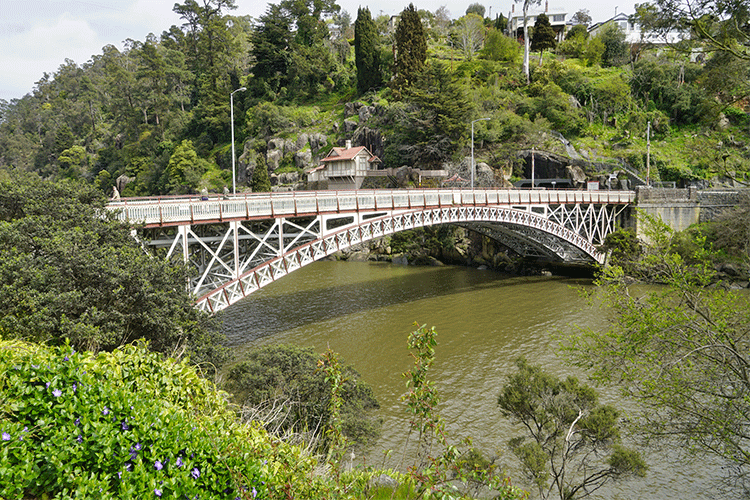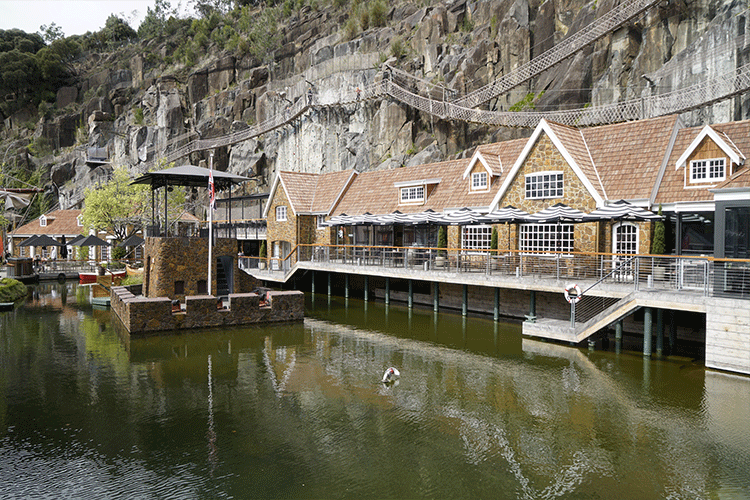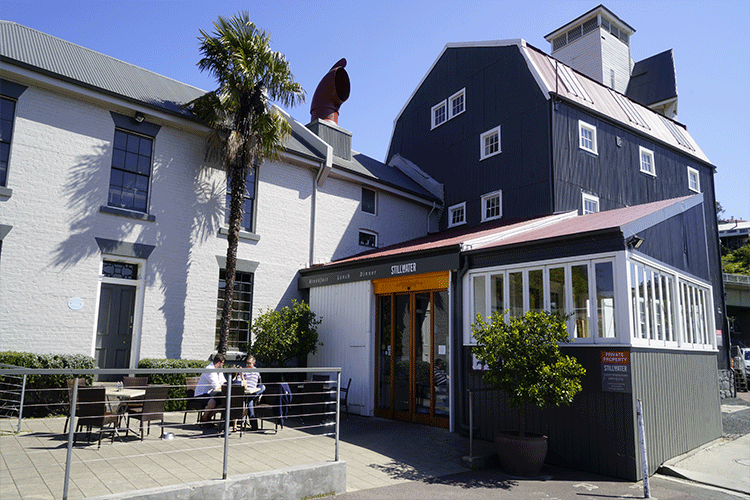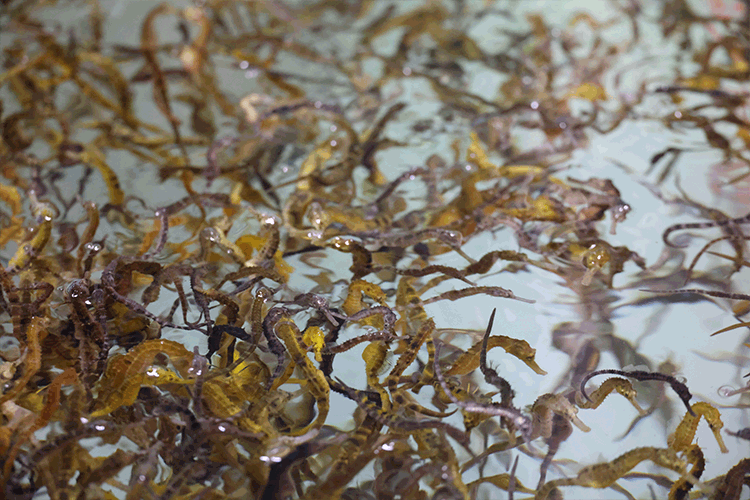
Grand Tour of Tasmania
[no money or gifts were requested or accepted]
It may appear as if this is just a few travel stories cobbled together, but, there is a more important objective. The objective is to take you on a simple, easy to understand road trip – a grand tour. On our tour we will explore a number of interesting places – each one trying to present a unique value proposition and discuss a number of interesting and unique businesses. Our tour will be presented through the lens of a consumer/marketing academic.
In marketing – context is everything. This exemplar is about providing context; to achieve this we explore a number of consumption activities and you will notice that they vary in cost and involvement. As you explore please consider:
- The pre-purchase decision-making process – keeping in a mind that the decisions outlined are syncretic decisions
- Searching for information – what are the likely sources of information?
- Evaluating alternatives – what are the likely steps a consumer would take to evaluate alternate offerings
- How expectations are formed and the evaluated?
- What situational factors may impact on tourism [e.g., COVID19]?
- Outline the importance of nurturing a sales baseline to reduce external communication costs and minimise fluctuations in demand.
- Consider the influence of the situational factors of customer, organisation, market and product factors. [for example, 1: how would different market segments behave as consumers; 2: organisational size and structure influence strategies and tactics; 3: how would economic factors influence consumption activities; 4: how would involvement and risk influence consumer behaviour]

Situational factors influence all decisions and the decision to visit Tasmania was influenced by COVID 19 travel restrictions [restricted travel destinations]. The first visit to Tasmania was in spring to see the spring flowers and the second visit in autumn to see the trees show their autumn colour and shed their leaves.
Tasmania is well worth a visit. There are two main cities Hobart and Launceston – each could be a destination for a shart break. It attracts visitors across most demographics, budgets, and values and lifestyles. It appeals to those who wish a trek in the wilderness and/or a fine dining experience. Tasmania is ideal for self drive holidays. gentle on the eyes,, and the scenery can change several times in an hour. From a marketing perspective – Tasmania could be described as a collection of small and medium business all trying to create something unique.
Travellers from the Australian state of Victoria often travel in their own vehicles [the Spirit of Australia one way ferry fare is $99.00 including a car], whereas, other visitors generally hire a car on arrival. There are many car hire options sedans for all budgets, 4WDs, and a range of campervans and mobile homes.
Going on vacation begins with the recognition of a need [and wants] and involves each step of the buyer decision process [click to read this module if unsure].
Perth has direct flights to Hobart, the capital city, and in a COVID world some would agree that it is worth paying the extra to reduce risk. I have to say that I felt that the service of the airline cabin crew was below an acceptable standard. Social media suggests that 68% of customers find this airline excellent or very good. Online comments suggest that there is a great deal of variability in the service delivery. HINT: As product variability is a key management task it appears as if this airline wants to tell everyone what to do and has lost focus on what they as an airline should do. Fortunately, the Hobart Airport COVID security staff were efficient and courteous and we were soon on our way to our hotel.
The previous time we were in Hobart we stayed at a hotel that was a 10 minute walk to/from Constitution dock, we were attracted to the first hotel as it was promoted as being within easy reach of the North Hobart restaurant scene. This time [looking for epistemic qualities and to save time] we elected to stay at the Grand Chancellor which is right on the waterfront. We paid a little extra to have a view of Constitution Dock and the Derwent River, however, the view was attractive both night and day [see below].
One of the reasons I like Hobart is that it has a vibrant waterfront that is part of the city and Tasmanian history – a history that is built around the sea. Even today one of the great ocean yacht races, The Sydney to Hobart Yacht Race, is part of the city and Constitution Docks.
The Grand Chancellor is close to the Drunken Admiral Restaurant, Pennicott Wilderness Journeys, closer to the Royal Tasmanian Botanical Gardens, and convenient to the Avis car hire depot where we were to pick up our hire car on day 3. Plus, we soon discovered that it is convenient to Van Demien’s Land Ice Creamery.
The Grand Chancellor was an excellent choice – the rooms clean and comfortable, the staff friendly, and price-wise good value for money. Others agree with online reviews [6000+] suggested that 92% of guests evaluated the hotel as excellent or very good.
Given the importance of delivering on promises and word of mouth [face to face and online] the question for marketing practitioners is what processes would be needed to ensure customer satisfaction and when deviations occur how to manage these events.
The photographs show the relationship between Hobart and the Derwent River. What is obvious to a marketer is how these features are part of the aggregate product that is Hobart and the aggregate product that is Tasmania.
The Royal Tasmanian Botanical Gardens
As we left the Grand Chancellor Hotel one of the staff hailed a taxi and hearing that we were going to the botanical garden he provided umbrellas. The Royal Tasmanian Botanical Gardens is an impressive place with a great collection of exotic trees, this outing took up most of our first full day and is really worthwhile for garden lovers. HINT: It is a short taxi ride from the city, you could walk it – but there are a few main roads that need to negotiate.
When we arrived, we were greeted by a volunteer who gave us a map and a brief overview. There was a light drizzle of rain, so we headed for the cafe and it nice just sitting there and watching the rain and the trees. The rain began to ease and was not enough to spoil our day. Overall the gardens are glorious and the Japanese Gardens spectacular – thanks to staff and volunteers.
One of the considerations that marketers must consider are who are the selected customer groups [target markets]. Who are we best satisfying? Often going outside of your selected customer groups can be expensive and may result in customer dissatisfaction. A visit to The Royal Tasmanian Botanical Gardens may not be everyone’s idea of a great day out. However, the quality of focussed marketing communication is indicated by a staggering 96% of visitors rating it on social media as excellent or very good. Tripadvisor voting it the #3 thing to do in Hobart.
When we think about gardens such as these it is easy to overlook the role of marketing. As a product the dominant component is place, however, ideas, experience, people, services and maybe goods also need to be considered. Imagine the role of the landscape architect in planning such a garden, the research, knowledge, and services that are involved.
Bruny Island
On everyone’s Tasmanian bucket list
Bruny Island is hard to describe – a little bit of everything – excepts the crowds. The scenery is beautiful, a rugged coastline, marshlands, some rainforests, pastures and some pastures with large trees. People often talk about the Bruny Island food – but let’s face it – the food in Tasmania is first class – and that is an understatement.
Getting there is a bit of fun. With a 30-45 minute drive out of Hobart, you then board the Bruny Island Ferry. You can take your car, but we elected to relax and take Pennicott’s Bruny Island tour. The booking staff were excellent, they picked us up at the hotel – even although it was 200 metres away. The cost of the tour was $225 per person and when you consider the convenience and not having to put your hand in your pocket for the rest of the day then it is reasonable value. Our guide, David, has been with the company for 3 years, he told us he has had various roles and really worked hard to make it an enjoyable and relaxing day – give this guy a pay rise.
Social media comments demonstrated a staggering 97% excellent or very good. The social media comments are full of praise for the staff – WOM at its best. When the comments are analysed all dimensions of SERVQUAL are accounted for and Pennicott’s would score very highly indeed on each dimension.
On our tour a few stated that they were expecting the whiskey distillery to be a little more sophisticated and one whiskey drinker for Sydney stated that someone ‘was having a lend’. It is not Glenfiddich – that is all I will say, however, the gardens are very nice and absolutely worth visiting.
Daci & Daci
Daci & Daci have three stores, unfortunately with time constraints we were limited to one store, but we did visit it twice. Their website accurately describes the experience – ‘Daci & Daci Bakers is an opulent destination for all- things-sweet, an artisanal patisserie, coffee palace, all day food and a buzzing meeting place for business, families & friendships’.
I was impressed by the attention to detail and the commitment to quality – total quality. All the product components goods, services, ideas, experiences, people, and place are carefully managed – from a marketer’s perspective a pleasure to experience and great marketing. Others agree with 91% of customers stating that it was excellent or very good. Online comments repeatedly used words like best, great, lovely …
Salamanca Markets
The Salamanca Markets are located at Salamanca Place, Hobart, in an area that once housed the shipping warehouses and merchants buildings. These sandstone buildings now form a backdrop to this market which is held every Saturday morning. If business is theatre then this is the best of theatre.
I suspect that for many, the Salamanca Markets is their local market and it is an ordinary experience, however, for visitors to Hobart it is an extraordinary experience. With around 300 stall holders, regulars and casuals, the Salamanca Markets is a big street market. Tripadvisor states that it is one of Tasmania’s and Hobart’s favourite attractions. The markets displays a broad selection of Tasmanian produced products from fruit and vegetables, bread, cheese, honey, oysters, woodwork, pottery, photography, crafts etc etc…
Tasmania has pioneered truffle farming in Australia and a few truffle farmers have stalls at Salamanca Markets and generously provide sample offerings. The pioneering work by Bill Lark and Lark Distillery have inspired a number of new distilleries and this fascination with whisky and gin sees no sign of waning. Several local distilleries attend the Salamanca Markets and the presentation of their product is both in keeping with whisky tradition or in keeping with the history of Tasmania.
From a marketing perspective the Salamanca Markets is an aggregate product, it is the sum of all of the stallholders, the sum of all of the interactions, all of the encounters, it is the theatre of business. Each stallholder makes a decision to be part of the market well aware that although there is competition for a share of the customer’s wallet there is also a needs for collaboration to make the market work.
This is a mammoth logistical event – ensuring that the right mix of stallholders, that fees are paid, and the many decisions that need to be made are made. There is a front stage and a back stage. Setting up and dismantling the markets each Saturday is a massive task that requires the collaboration and cooperation of many [+casual] staff.
There are also the buskers and a regular for over 35 years is the guitarist Cary Lewincamp. I found Cary’s music charming, and gentle and like a walk through a Tasmanian forest. This new found awareness of his music and his 35 year association with the Salamanca Market motivated me to reach out to discover more about Cary and his business. I am not qualified to discuss his music, however, from a marketing perspective Cary is very interesting. Sure he plays his music at the markets, he also composes music, conducts small concerts in his home on the slopes of Mt Wellington, markets his music online, and has taken up the art of guitar making in his home studio. If you are familiar with Tasmania timber you would know about Huon Pine which is extremely rare. When you watch the video please keep an eye out for his hand made guitar. Cary has made music his passion and his life. “I just want to share my music, which I feel has a nice honesty” states Cary.
Please listen to his music as we take a little visit to The Salamanca Markets.
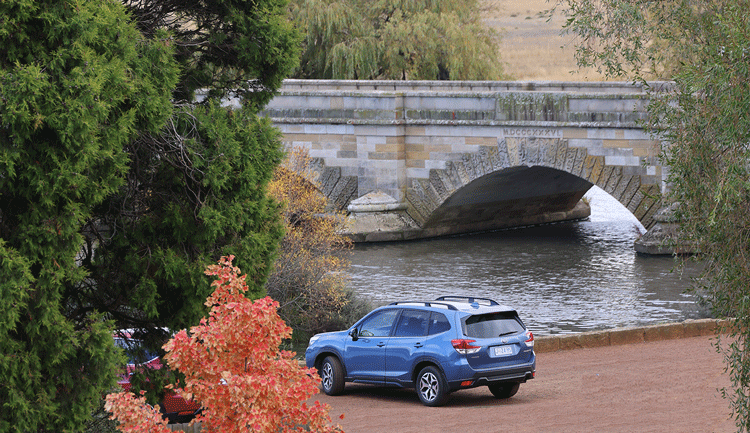
Avis
When undertaking a road trip – you need a vehicle. Searching and selecting the right vehicle can impact on your entire vacation. I consider it a high involvement decision. Fortunately, over the years I have developed fond memories of some of the cars and the road trips we shared.
The Subaru Forester from Avis in the Hobart CBD was an ideal car for a road trip in Tasmania. A big part in overall satisfaction is the service you receive when picking up and dropping of your car. The service we received was first class, fast, efficient, courteous, made eye contact, listened, and informed us about the car and a few idiosyncrasies of Subaru cars. I mention this to highlight the importance of blueprinting the service encounter to ensure effective and efficient service.
Along the way we met two couples who had booked online with newcomers to the hire car business and were far from happy, the story of one couple is below.
Keep in mind that known brands reduce risk.
Not quite what they expected
As we drove around Tasmania we often passed the same cars and recognised a few. This one stood out. One day we pulled into a car park, a young well dressed couple got out and smiled. He had a Sony aR camera with a 35mm prime lens [observed], which was at odds to the car, and worth considerably more than the car. It turns out that they arrived in Tasmania late at night only to find out that this was their ‘late model Toyota Camry’ from an online rental site. They were initially furious but after a few days saw the funny side [I think putting a brave face on the experience]. Checking out the reviews for this company reveals a world of promises not delivered.
On another note there is a movement to ban cars with offensive messages.
Semiotics & whisky
A short walk from Salamanca Markets is Lark Distillery Whisky Bar. It would be appropriate before we head into the central highlands of Tasmania, to look at the presentation of Lark Distillery products. Bill Lark is regarded as the pioneer of the renaissance in Tasmanian whisky and the Lark web site states that it was whilst enjoying a single malt whisky in the central highlands that his interest in distilling a Tasmanian whisky was sparked.
For those who know me – know that I am not a whisky drinker, however, I am interested in marketing semiotics [Semiotics – from the Greek ‘semio’ – ‘of signs’). The whisky producers are master of the art of semiotics – the use of visuals – emblems, fonts, colours, layout, textures, design, props etc – all elements coming together to communicate an appropriate message. Moreover, semiotics is an important consideration for marketing practitioners tasked with positioning or repositioning a brand. To best employ semiotics, marketing practitioners should research the selected consumers, the organisation, the market, and the product categories.
Whisky has traditions and conventions and there is considerable brand loyalty amongst whisky drinkers – including regions. As far as whisky history is concerned the Tasmanian distilleries are newcomers. The rule of thumb is to be recognised and considered most new entrants observe the semiotic of the industry and yet at the same time to gain a position employ semiotics to market communicate a unique product value proposition. Although, one task is to be considered by whisky consumers, another task is to create a brand preference with new whisky consumers – education is a key communication tactic. Although this was not my experience at Lark, online comments suggest that some customers find it annoying when service staff are condescending and arrogant to those with limited whisky knowledge. Another interesting observation is that ambivalent customers seldom post comments – this begs the question are social media comments representative of collective satisfaction?
Interestingly, the legend and founder, Bill Lark, is celebrated through the Lark bird emblem and the whisky barrel and his vision is retold many times by the staff at the Lark Bar and tasting stalls.
Please have a look through the following images and consider the semiotics employed in the branding of Lark products.
Willie Smith’s Apple Shed
Tasmania has long been described as ‘the apple isle’. A short drive south of Hobart and you are in the Huon Valley and the heart of Apple country. Fortunately, this road trip was during apple season and to see trees laden with apples and sample a few unfamiliar heirloom apples along the way was a treat.
Willie Smith’s Apple Shed is set in a large wooden barn and surrounded by apple orchards and promotes the apple, apple growers, the history of the apple industry, and organic production of apples. It is a great place to stop have a cider and meal. It was mid afternoon on a Wednesday when we arrived and there were customers of all ages, however, I suspect the demographics would change by the time of the week and if an event was happening. There is a interesting collection of memorabilia.
What is also worth noting is that they distil apples and market them under the Charles Oates brand. They show respect for Apple history as Charles Oates was an ex-convict apple grower who was a pioneer in the region. There is a French influence in their distilled products and with a sense of humour have named the still – ‘Antoinette’.
From a marketing perspective the Willie Smith Apple Shed is an exemplar of how to create a theatre and an authentic experience. Please look through the following images.
Ratho Farm
For most organisations, creating a meta-narrative is an important part of internal and external marketing communication. A meta-narrative is a consistent and ongoing story embedded within the communication of an organisation and, in time, an important part of brand identity. A meta-narrative, when done well, provides philosophical guidance to staff and helps provide communication topics for online and face to face brand advocates and word of mouthers. Branding encompasses all activities that contribute to how a product, over time, is positioned in the consumers’ mind.
We will now explore Ratho Farm an historical Tasmanian farm and golf course. What is interesting about Ratho Farm from a marketing perspective is how they are creating a unique product and developing a unique mega-narrative.
Rathos Farm, located in Bothwell, Tasmania is Australia’s oldest golf courses and one of the oldest golf courses outside of Scotland. It should come as no surprise that the town of Bothwell, on the Clyde River in the central highlands of Tasmania, was settled by Scottish migrants in 1822. Bothwell promotes itself as Tasmania’s most Scottish town. This Scottishness is evident in the tartan street sides, the Scottish styled stone buildings throughout the town, Highland and Angus cattle, and trout fishing in the local streams – there is even a golf museum.
Therefore it should come as no surprise that there are even a few whisky distilleries in the central highlands of Tasmania.
The early Bothwell settlers, keen to maintain their Scottish heritage and love of their national game built a golf course on Ratho Farm and the course and the homestead played a central role in the early years of the local community. A course the golfers shared with the farm’s sheep. Today, owner Greg Ramsay is restoring the course and converting the farm buildings into guest accommodation. I suspect that the accommodation is a way to fund the restoration and maintenance of this historic golf course. And this is a worthy cause.
Greg has created a feel that is quite rustic and ramshackle – in keeping with old Australian farms. There are quite a few majestic trees including a magnificent oak tree. As you would imagine a stay at Rathos Farm is quite different to a typical hotel/motel stay. Guests are encouraged to share their travel stories around the homestead fireplace prior to the evening meal.
From a marketing perspective the conversations are typical in that travellers ask exploratory questions – such as – Where are you from? How long are you in Tasmania? Is this your first time to Tasmania? Where have you been? Have you been to ….? Where are you heading to next? Where did you like best? Have you hired a car? The time on the road creates an experience pecking order. The traveller’s tales reveal a bunch of people just trying to be sociable, advice is given about what to approach and what to avoid. These conversations are a type of word of mouth. However, deeper analysis reveals that they consider a Tasmanian vacation as an aggregate product comprising a number of total products and Ratho Farm is one total product that is evaluated individually but also within the aggreagate product.
The evening meal is a ‘long table’ event of simple but delicious food. During the meal poetry is recited, stories of bushrangers, tales of drinking events, Melbourne Cup winners, and the history of life on a pioneering sheep and wool farm entertain the guests. Guest then retire to their accommodation units only stopping on the way to admire a glorious night sky.
Breakfast is in the homestead and it is a little bit of chaos. We met a group of golfers undertaking a tour of Tasmanian golf courses, and stories of AFL football, forthcoming weddings and drone photography blessed our table. One couple from Tasmania were embarrassed at the ‘luxury’ web description given to Ratho Farm and assured us that this is not what Tasmanians referred to as ‘luxury’. Perhaps, ‘heritage would be a more accurate descriptor and would not amplify expectations. However, the visitors to Tasmania were less concerned. I also feel that most guests would applaud Greg for ‘having a go’ and preserving part of Australian, Tasmanian, and Golfing history.
From a marketing point of view, I see Ratho Farm as an exemplar of how to keep a mega-narrative alive and how to build a product around a unique product value proposition.
To Michael our host thanks for your hospitality.
Shene Distillery
Earlier we mentioned a distillery that was a little home made. However, there are many fine distilleries in Tasmania, one distillery that grabbed our attention was Shene Distillery. This distillery is situated on a fine property, with heritage listed buildings and has the feel of a long established Scottish distillery. As you can see from the photographs below the tasting rooms and the former ‘stables’ have been painstakingly restored.
The product presentation [style, colours, font, texture], is first class and is in keeping with a fine Scottish single malt whisky.
The owners, Anne and David Kernke specialise in whisky and then gin. They are committed to a process that is as kind to the environment as possible. This is a family affair even down to the West Highland Terrier, Gillie.
You may spot David in one of the photos providing customers with a history of the property and the distillery. Not being whisky drinkers we selected a gin and brought it home to Perth.
On the road to Launceston
On the main road or Heritage highway to Launceston you pass through a few small towns. Our first small town is Oatlands. It is located just off the highway and is nice and quite with heritage sandstone buildings and quaint shops. There is also a mill built in 1837 which is still in operation, quite a few buildings appear to be built from free convict labour, there are apple trees in front gardens, and the locals are into topiary. Also worth mentioning is a lake on edge of town which this is a popular spot with the campervanners.
Our next stop is Ross, also located just off the Heritage Highway. Ross has a fine convict built stone bridge, heritage buildings, wide tree lined streets, antique shops, and a fine church overlooking the town and the surrounding countryside. Like most small towns in Australia there is a memorial dedicated to people from the district who lost their lives in war and those who ‘shared its danger’. In Ross the memorial is centrally located at the intersection of Church and Bridge Streets. I found the statue of a soldier truly beautiful. A lady [after seeing me take a number of photographs] informed me that the statue is carved from Italian Carrara Marble [think Michelangelo’s David and Pieta]. I tried to understand the community decision-making process that was involved in the purchase of this statue and memorial.
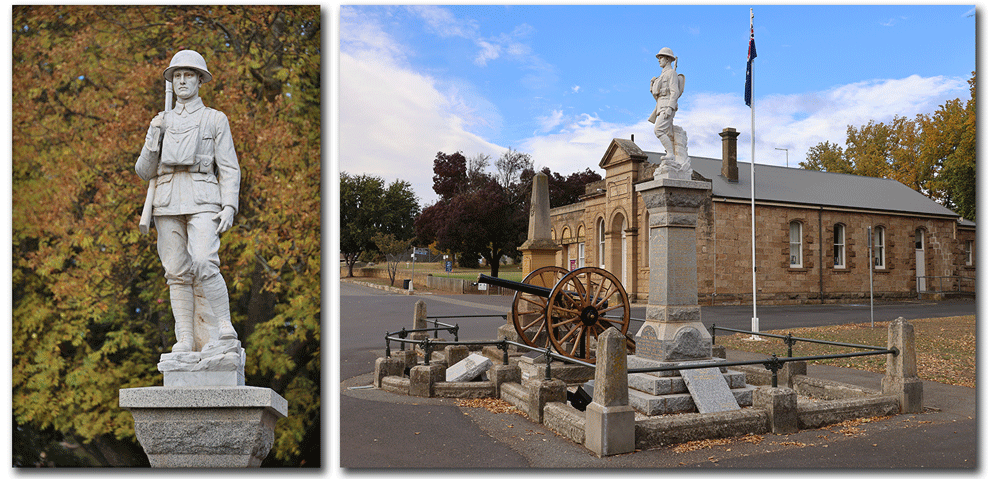
Ross also has two fine bakeries. I will not enter into the debate as to which one is best and most travellers would only go to one, therefore making a comparison could be misleading. We decided to go to The Ross Village Bakery to sample their ‘world famous’ vanilla slices, however, Ross is also famous for scallop pies. Such is the fame of the vanilla slices that other travellers suggest – ‘you must stop at Ross for a vanilla slice’. When you are in Ross people openly promote their favourite bakery, and in other parts of Tasmania people ask – ‘did you stop at Ross for a vanilla slice’ – a little weird but nice – quality pays dividends.
I will say that from a marketing academic’s perspective what is evident is the difference between brand image and brand identity. Brand image is what the organisation communicates and brand identity is what the customers communicate. When an organisation has a positive brand identity and customers become advocate [brand advocates] both face to face and/or online then this increases the sales baseline. The sales baseline is the volume achieved regardless of any other sales tactics. Building the sales baseline is long-term – the benefit is that an organisation, to achieve revenue objectives, will be less ‘dependent’ on short-term sales promotional tactics. This will help the organisation to achieve the financial; objectives of increasing sales revenue, reducing costs as a 5% of sales, and increasing the value of organisation. Managing the sales baseline leads to brand equity.
Launceston
Launceston is in the central north of Tasmania, it is one of Australia’s oldest town, located 40 kilometres upstream on the Tamar River. Wikipaedia states that archaeological evidence suggests that the area it has been inhabited by the Letteremairrener people for at least 7,000 years and possibly up to 35,000 years. The Letteremairrener people were seasonal hunter gatherers who had a distinct migratory pattern depending on the season and availability of food.
Launceston is an easy city to like. One feature is the beautiful gardens, the City Park is particularly impressive. The images below are of the stunning Dahlias in the City Park. I like to point out areas of marketing that may not be main stream. Horticulture is a major industry, and often overlooked, interestingly there are a number of bulb nurseries that breed and distribute bulbs to garden centres and hardware stores. Many of the B2B industries often ‘out of sight and out of mind’.
Being an older city and with a population of approximately 130,000 time has been kind to Launceston. What is appealing is how they have preserved the past and are working towards a more honest and accurate account of history. There are many fine older buildings. Although, there are a few shops that have an old world feel, such as the umbrella shop in the image below, sadly, much of Launceston’s retail scene is like every other city in Australia.
The Queen Victoria Museum and Art Gallery is located on two sites and both are worth visiting. From the Art Gallery, I chose to include this image of early migrants arriving in a hybrid steel, sail, and steam ship as it depicts the quest for more effective distribution of information, products and people.
The second site is at the former railway yards. This site is one of many old sites that has been repurposed. Good architecture can blend old and new buildings together to create a place and experience. This exhibition has a transport and machinery theme and it feels like the railway workers just knocked off work on a Friday and did not return. It reminded me of going to a factory on a weekend and tools were left here and there.
Another site that is worth visiting is Cataract Gorge, there are nice gardens, and the site of Australia’s oldest hydro electricity plant originally opened in 1985 [rebuilt later]. There are a large flock of peacocks that congregate at the tearoom gardens.
Launceston and surrounds
A couple of days before our trip to Tasmania we went to the cinema. As we were waiting in the foyer, and by chance, a conversation began with a couple who randomly mentioned they had just returned from a holiday in Tasmania. This may seem a little strange in a pre-COVID world but felt quite normal given the times. We mentioned that we were about to go ourselves and to cut a long story short they mentioned that because of their interest in conservation they had visited Seahorse World at Beauty Point North of Launceston and had found the breeding of seahorses fascinating.
We had planned to base ourselves in Launceston for a few days visit a few shops, the city gardens, and explore the Tamar Valley to the north of the city – a trip to Seahorse world was easy to accommodate.
The day before our Tamar Valley excursion I was wandering around the shops, in a menswear shop I was asked where I was from [people in Launceston must know you are not from there]. Seeking advice on the Tamar Valley and the Batman Bridge crossing I was informed that there is a movement to change the name of the bridge – as John Batman was quote ‘a horrible person’ and had committed atrocious crimes in the early days of colonial settlement. With a few minutes spare I find a street bench in the sun, enter my password and do my research on John Batman. It was current issue and well reported. There was agreement that the name was ‘inappropriate for clear historical reasons’and mixed views on the process of changing of names – with one person presenting the view that dual naming [Batman Bridge + local indigenous name] was better in the short-term as it provided the opportunity to correct history, provide multiple perspectives, and better learn from the past.
All of this just sitting in a mall in the sun on an autumn day. It is interesting how technology has changed our lives and how we readily adopt innovations when there is a noticeable advantage – this is particularly evident when travelling.
The drive to Beauty Point is a truly delightful drive and in autumn the trees are in the process of changing colour. We drove up the east side of the river and then crossed the Tamar River on the Batman Bridge. The drive is scenic – undulating, passing a number of farms and some natural vegetation and glimpses of the river.
As we crossed to the west side of the Tamar River we had a brief look around Beaconsfield, which is known for a tragic rock fall, the one kilometre rescue of trapped miners, and a community united.
Seahorse Australia & Seahorse World
Background: Seahorse Australia and Seahorse world are two business entities owned by Craig and Rachelle Hawkins, they are located at Beauty Point in the Tamar Valley, north of Launceston. Seahorse Australia is a breeder, producer, and exporter of bulk seahorses for aquariums and is one of the largest businesses of its kind. Seahorse World is located next door and is a tourism and educational business that allows visitors to gain an insight to the breeding program and how the seahorses are prepared for aquarium life and pet shop food.
As some [fortunately not all] marketing textbooks do not distinguish between animate and inanimate products, I suspect that many marketers think of products as inanimate products [non-living] manufactured on an assembly line. In this exemplar the product is an animate [living] product which creates complexities and makes this exemplar unique and insightful.
When reading this exemplar consider the impact of situational factors [COMP], including the impact of COVID 19 and the loss on international tourists.
This enterprise has an interesting evolution. Seahorse Australia was initially, a seahorse research centre, there was an attempt to farm and commercialise the research, however, when outcomes fell short of expectation the venture was put up for sale and purchased by Rachelle Hawkins [a marine biologist working at the seahorse farm] and her husband Craig [a science graduate working in another field].
With considerable effort the business steadily improved and then in 2010 there was an opportunity to purchase Seahorse World. Once again Rachelle and Craig needed to turn around a tired and declining business in need of renovations. Seahorse World had won tourism awards, however, existing relationships with tourism operators needed nurturing and visitor awareness, interest, desire, and action needed attention. Craig trialed a number of external marketing communication tactics and like many operators learned lessons about what works and what does not along the way. He is well aware that there are many people who are willing to take your money without any guarantee of success. Rachelle and Craig soon realised that they need to intercept visitors more cost effectively and given that Tasmania has only 3 entry points [Hobart Airport, Launceston Airport, and the Devenport Ferry Terminal] they developed strategies accordingly. With COVID and restrictions it meant that a renewed focus on attracting Tasmanians and interstaters. Over the years they found that being involved in the community and though business networking is beneficial and reciprocal business often results
Given their science background it is natural that values and environmental issues are at the forefront of decision-making. Seahorse Australia is one of the few businesses registered and officially approved to raise and market seahorses. In their values statement they indicate that the hope is that by providing a supply of quality aquarium raised seahorses there will be less demand for seahorses that are taken from their natural habitat and die from shock. Reducing the demand for wild seahorses reduces the risk of seahorses being over fished. What is interesting is that by marketing they are demarketing the poaching of seahorses from the wild.
On our tour of Seahorse World, our guide indicated that they are continuously improving their knowledge and breeding program to produce seahorses that are more resilient. They are also suppliers to small and large aquariums around the world. So chances are that if you have visited on of the large aquariums around the world you have been watching seahorses raised at the Beauty Point breeding centre. The tour was very informative as you witness each stage of the breeding and nurturing stage. There are a few surprises such as the sex life of a seahorse. There are touch tanks and other exhibits [see seadragon picture below].
Our guide was very polite, and freely shared his knowledge. Our group all appeared to learn and enjoy from the experience. Visitors to Seahorse World rate it very highly with 92% of visitors rating it excellent or very good. On the negative social media comments [1] some comments would suggest that people may not realise that this is educational, commercial farm run by marine biologists and not ‘Disney World’ entertainment [2] other comments appear as if the poster is having a really bad day and randomly venting. Interestingly, Craig answers a number of comments and I found his answers very informative and clearly this educational focus applies to the post-purchase stage on social media.
Sheffield
Place: creating a unique value proposition
Driving through Tasmania we came across an interesting town quite by accident. A town where locals were involved in their community and only too happy to share their town’s story. One man said with a wave of his hand, that before the murals people only stopped if they needed to fill up with petrol and to visit the bathroom [not an exact quote].
To attract tourists, to create interest, and create a desire that also leads to an increase in visitor number motivates many towns to consider their options. The town of Sheffield wanted a unique product value proposition – one that would put them on the map – the tourist map – one that could be built around an annual event.
In 1985 a public meeting was called and it was agreed that Sheffield should be known as an outdoor art gallery. In time the Sheffield murals and rural tourism association was formed. The people of Sheffield based their concept on a town, Chemainus, on Vancouver Island, in Canada. In 1981, Chemainus was facing the imminent closure of the town sawmill and set about creating a tourist attraction that would provide an economic boost for the community.
After considering this option the people of Sheffield set out to create a walk of murals; to communicate the history of the town and the town’s pioneers; today explorers, local identities, shopkeepers, shearers, farmers adorn many of the walls of Sheffield’s buildings. Each year, international artists are invited to a week long Muralfest in April. Initially the Murafest created the art, today it is also to rejuvenate some of the earlier works and keep the exhibition fresh and different.
Just after we filled up with petrol, the heavens opened up and the rain came down so we headed to a local café for lunch – Tasmanian café lunches are a treat – the scallop pies are particularly good – if you have not had a Tasmanian scallop pie then you should put it on your must do list. Then the sun came out and we, and many others took advantage of the fine weather and wandered around the town, the murals seem to bring out the best in people as everyone was in for a chat. Mount Roland appeared from behind a curtain of rain as a backdrop to the murals.
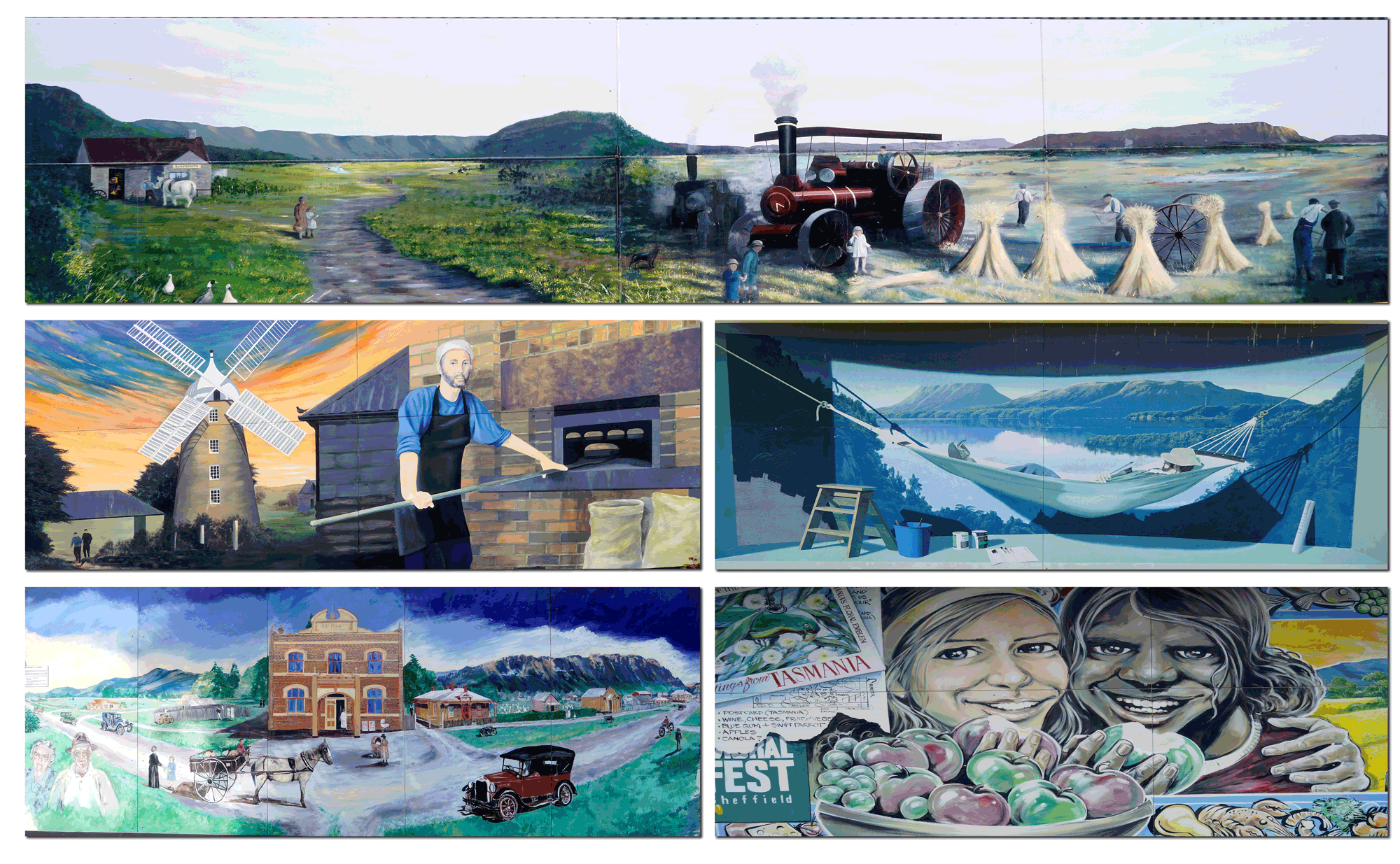
what do the comments on tripadvisor say
The comments on Tripadvisor provide a glimpse into the traveler’s experience.
The town must be consistently surprising visitor expectations as the majority [97%] of posts are excellent or very good. In 2020 Sheffield murals was awarded ‘The Travellers Choice’. What is also interesting [unusual] is how many people have uploaded their photographs of the murals.
The following comment echoes the experience that we had and highlight how towns nearby have also tried to position themselves.
‘Ingenious idea to turn this town into an open air art museum in the 1980s. It now has around 100 high quality murals scattered through its streets …”
‘Nearly every building in the town has a beautiful mural painted on the side. It is not possible to drive through this place without parking and admiring all the details up close. The whole town was buzzing with life as tourists strolled up and down photographing the wonderful artwork. What a beautiful way to set your town apart. So far we have seen Deloraine with its plentiful and quirky street sculpture, nearby Railton with its town topiary animals, and gorgeous Sheffield with its murals.’
Another traveller talks about passing on the information of this discovery to her family and friends [WOM + eWOM.
‘Mum and I fell in love with the murals especially the ones painted on the side of buildings, took a lot of photos so I can share them with family and friends when I get back home to Melbourne.’

Another Tripadvisor contributor suggests that the whole town is collaborating to create a great customer experience.
‘This was our first stop on our Tasmainian Holiday. And what a treat just a lovely town with great Art Work in so many locations and great food and drinks, then that majestic Mountain as a back drop [see below] was just such a treat that we mention Sheffield every time we talk to people about our trip.’

The trip back to Launceston
After a very lovely lunch at Beauty Point overlooking the water and a quick look around the town we headed back to Launceston. This time we did not go over the Batman Bridge but headed down the west side of the Tamar Valley. On the way popping into the Burt Munro Cafe, in honour of a famous Invercargill [New Zealand] motorcycle legend. The cafe all things motorcycles and is worth a visit [see Invercargill and Indian Motor Cycles]. At Burt Munro’s we had a coffee and a look around the memorabilia and were soon on our way. Social media suggests 88% of people consider it excellent or very good, recurring comments are the atmosphere created from an interesting/eclectic collection of memorabilia, how it has become a favourite pit-stop, size and quality of burgers, friendliness of staff, however, there are a few negative comments.
We did stop to pick up some bread at the nearby Exeter Bakery and could not resist a cake for later. I was surprised when I looked at reviews of the Exeter Bakery on social media and the comments suggest extremes of satisfaction or dissatisfaction. Perhaps, customer expectations are heightened and therefore a big percentage are neutral and are not commenting. Perhaps, like many retail businesses the service component of the product is variable and needs attention.
That evening we went to the cinema. When we consider all of these smaller activities we can conclude that total products vary in cost and involvement and that an aggregate product is often made up of range of total products – some of which would be quickly forgotten – unless something made the event stand out [see memory in the e-book].
The east coast of Tasmania
Leaving Launceston we head towards Scottsdale, and although it is only 60-70 kilometres this winding road feels a lot longer. However, it is not a time you will begrudge as it is extremely beautiful. Part of the journey is through rainforest and the remainder through rolling farmland. Some of the hairpin bends are white-knuckle experiences; especially when confronted with a logging truck or a large mobile home. There are a few lookout parks and the people are chatty and like to pass on their experiences, particularly those who you met along the way.
Over the next few days we visit the towns of St Helens, Bay of Fires, Bicheno, Freycinet National Park, Swansea, and Richmond. Just for the record Bicheno had the best bakery of the trip [Blue Edge Bakery] and also the best seafood chowder [Lobster Shack]. The food and the quality of the service was outstanding at both.
Being able to serve people quickly and add to the experience takes effort – think about the product components and also the blueprint for how orders are taken, prepared and delivered.
Port Arthur
The consumer behaviour related to memorial tourism is fascinating. Most memorials are war memorial and are a feature of villages, towns, and cities.
There are scholars who refer to memorial tourism as ‘dark tourism’, however, I think that there are distinct differences between memorial tourism and dark tourism. I realise that this is my opinion and some do not share this opinion that some would refer to Port Arthur as a dark tourism site. And I realise that there would be many motivations for visiting Port Arthur and I believe that some may be reluctant to visit. Whilst many I have spoken to visit as a type of pilgrimage, to show respect, and better understand a part of Australian history. I also suspect that there are people who would visit it out of some dark interest in the violence, pain and suffering.
Initially when planning the Tasmanian road trip our first destination after leaving Hobart was to be Port Arthur, however, we discovered that if we made it our last visit before returning to Hobart it would coincide with the 25th Anniversary of the Port Arthur Massacre, where 34 people were senselessly killed and another 24 wounded. The Australian people were outraged that this could happen and happen in a place that was already burdened by tragic events. What happened next was that people lobbied the government to buy-back community firearms and to ban the ownership and importation of certain weapons. There was push-back but the movement was so dedicated to making Australia a safer place that the government agreed to their demands and to their credit followed through with this decision.
Old and more recent events at Port Arthur Historic Site have played an important role in Australia’s cultural history.
As a marketer and someone interested in the evolution of marketing I see that the events that motivated the settlement at Port Arthur are part of the evolution from farm to factory and the mechanisation of farms and factories. It is a lesson on what happens to the people caught in the middle of major disruption. People who often through no real fault of their own were displaced and removed from their traditional land; Robert Hughes classic work The Fatal Shore is insightful.
‘Workers were pincered between falling wages and rising prices; the mechanization of hand tradies created runaway unemployment; and the inexorable spread of enclosure [land that was previously commonly owned and allocate it to wealthy landowners who then cleared the land] was driving people from the country to the slum’ (Hughes, 1987, p.161) … ‘poverty begets theft’ (p. 163) goes on to say that many saw the solution as removing the ugliness of the vagrants from their sight and for that Australia was the perfect prison.
I recall hearing but have been unable to recall who said it – that Tasmanians have been shaped by the skills of survival, the respect for the land and the sea, the remembrance of cruelty endured in those early penal days – this may be one reason why Port Arthur was one of the first tourism destinations in Australia. Soon after the penal colony was closed in 1877, small hotels and tours were established in Port Arthur as descendents tried to maintain the memory of Port Arthur and ‘man’s inhumanity to man’.


